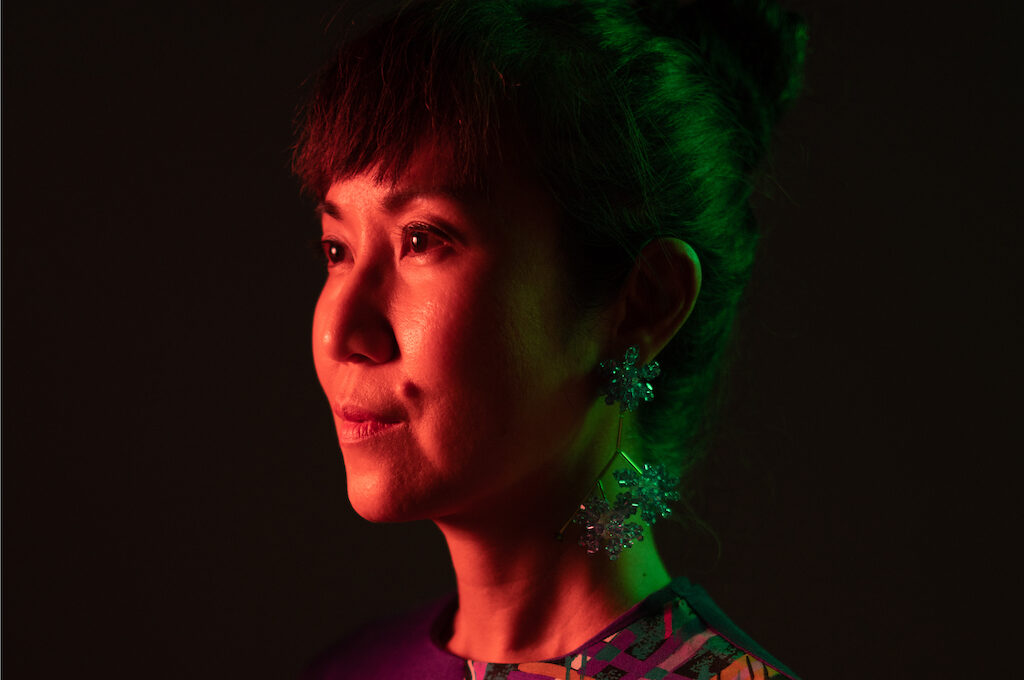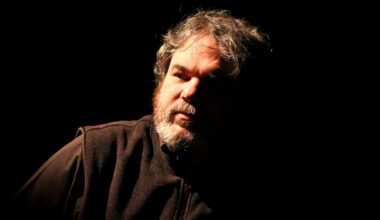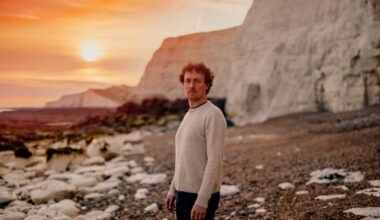Kotoka Suzuki is a Japanese-born composer and sound artist. Her work frequently investigates the relationship between visual elements and sound, often crossing into theater. Her compositions reflect on life, breath and nature, proposing sound as a physical form manipulated through the sculptural practice of composition. Inspired by the synthesis of technology and music, her work is written for a wide range of mediums, including acoustic instruments, electronics, video, dance, and multimedia, such as spatially interactive audio-visual work for both concert and installation settings.
Kotoka Suzuki is part of this years Heroines of Sound Festival at Radialsystem / 7-9.7.2022
Suzuki’s work has been featured internationally at venues such as ZKM Media Museum, Stanford Live, Lucerne Festival, and ISCM World Music Days. She is a recipient of DAAD Berlin Artists in Residence, Bourges Multimedia Prize, Electro-Acoustic Musica Nova Prize, and New Music USA Grant. She is an Associate Professor at the University of Toronto.
FACTS
1. Fact can be a belief
2. I have a cat named classical the cat
3. Dissonance is the truth about harmony – Theodor W. Adorno
QUESTIONS
1. What is the biggest inspiration for your music?
Nature and the life cycle, and what nature can tell us about ourselves. I feel there is nothing more beautiful than nature. I’m drawn to its complexities and the wonders it possesses. There is also so much we don’t understand about it. For instance, fractals in nature can teach us about the universe or even the structure of our anatomy, like our brain. How old mother trees in forests share nutrients with their neighbors and offspring when danger approaches can teach us about the fundamental system of lifeline and survival. Nature has a lot to teach us. It has the ability to make you feel both inspired and grounded.
2. How and when did you get into making music?
My mother was a pianist, and I began learning the piano when I was six. As a child, I played a lot of Bach, Beethoven, and Mozart as a beginner, but I was too young to appreciate or emotionally connect with them. When I was nine, I was introduced to Bartók’s Mikrokosmos and many bosa nova pieces. These introductions to new harmonic and rhythmic languages had a huge impact on me. They inspired me to create music and I started to compose around this time.
3. What are 5 of your favourite albums of all time?
This is difficult since they change depending on how I feel…
J.S. Bach, Goldberg Variations by Glenn Gould (1981 recording)
Charles Mingus, The Black Saint and the Sinner Lady
Miles Davis, Kind of Blue
I like anything by Takemitsu
Love the late Beethoven quartets
4. What do you associate with Berlin?
I think of its vibrancy, energy, and receptivity to new ideas. Also nostalgia – my time living in Berlin in early 2000.
5. What’s your favourite place in your town?
My sunroom. I live by the lake, and start my day by sitting in my sunroom, gazing out the window. It makes me feel recharged, ready to face the day.
6. If there was no music in the world, what would you do instead?
Can I refuse to believe this is possible? If there is a world where music is forbidden, I would still make music in my head.
7. What was the last record/music you bought?
Mingus, Town Hall Concert
8. Who would you most like to collaborate with?
Architects. If Carlo Scarpa was still alive, I would have loved to work with him.
9. What was your best gig (as performer or spectator)?
Watching the sun set over the Empty Quarter of Oman. My visual, auditory and tactile sensations were unlike anything I’d ever experienced before – they became incredibly acute amidst the boundless and utterly quiet desert. The best multi-sensory performance I’ve ever experienced.
10. How important is technology to your creative process?
Technology is simply a tool. I’m interested in the synthesis of technology and the natural, and many of my work combine electronic and acoustic sounds. But the older I get, I prefer working using primitive tools. There is something very satisfying about the manual process – getting your hands dirty and learning how to navigate without the help of any machine. I try to only use the type of technology that I think the work needs.
11. Please tell us, what the audience can expect from your piece you present at this years Heroines of Sound festival.
“Orison” is written for three music boxes (three players) and fixed electronics. It’s a piece that’s embodied by recordings of children during wartime, speaking and singing about hope, peace and the sorrow of their personal experiences. The work was written as part of the series “In Praise of Shadows” I began in 2015 – the series is inspired by Junichiro Tanizaki’s essay by the same title, written during the introduction of technological modernism to Japan in 1933.
I had a lot of fun with the piece, but had no idea how much work would go into constructing these paper rolls! – so much precision is required in making these. One of the paper rolls is very long and is continuously fed from one to another music box; all three music boxes use this paper roll to eventually play the same melodic line. The third performer inverts the melody by turning the paper roll at one point. This is something I don’t think everyone notices, so you can keep an eye out for it.


